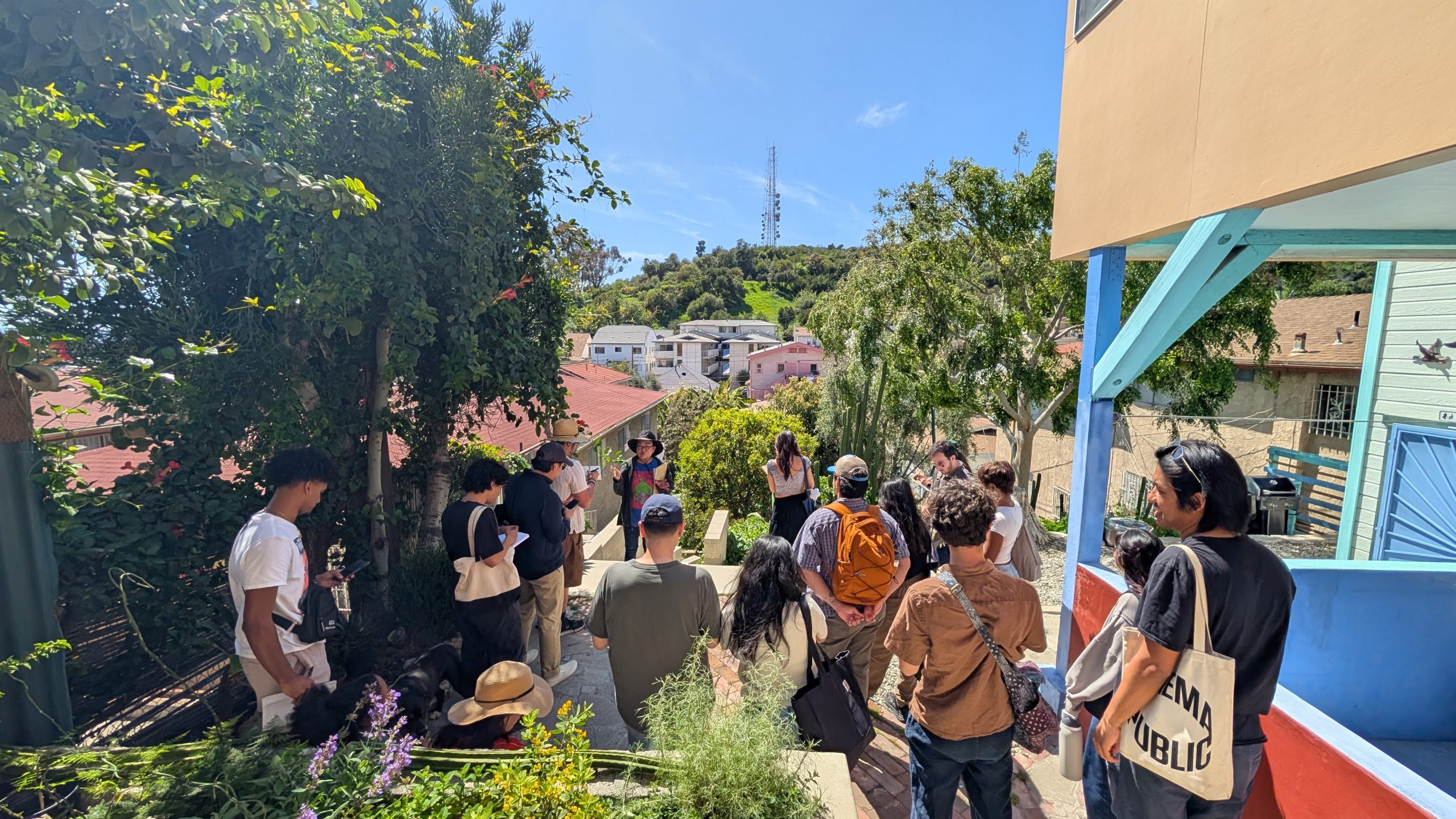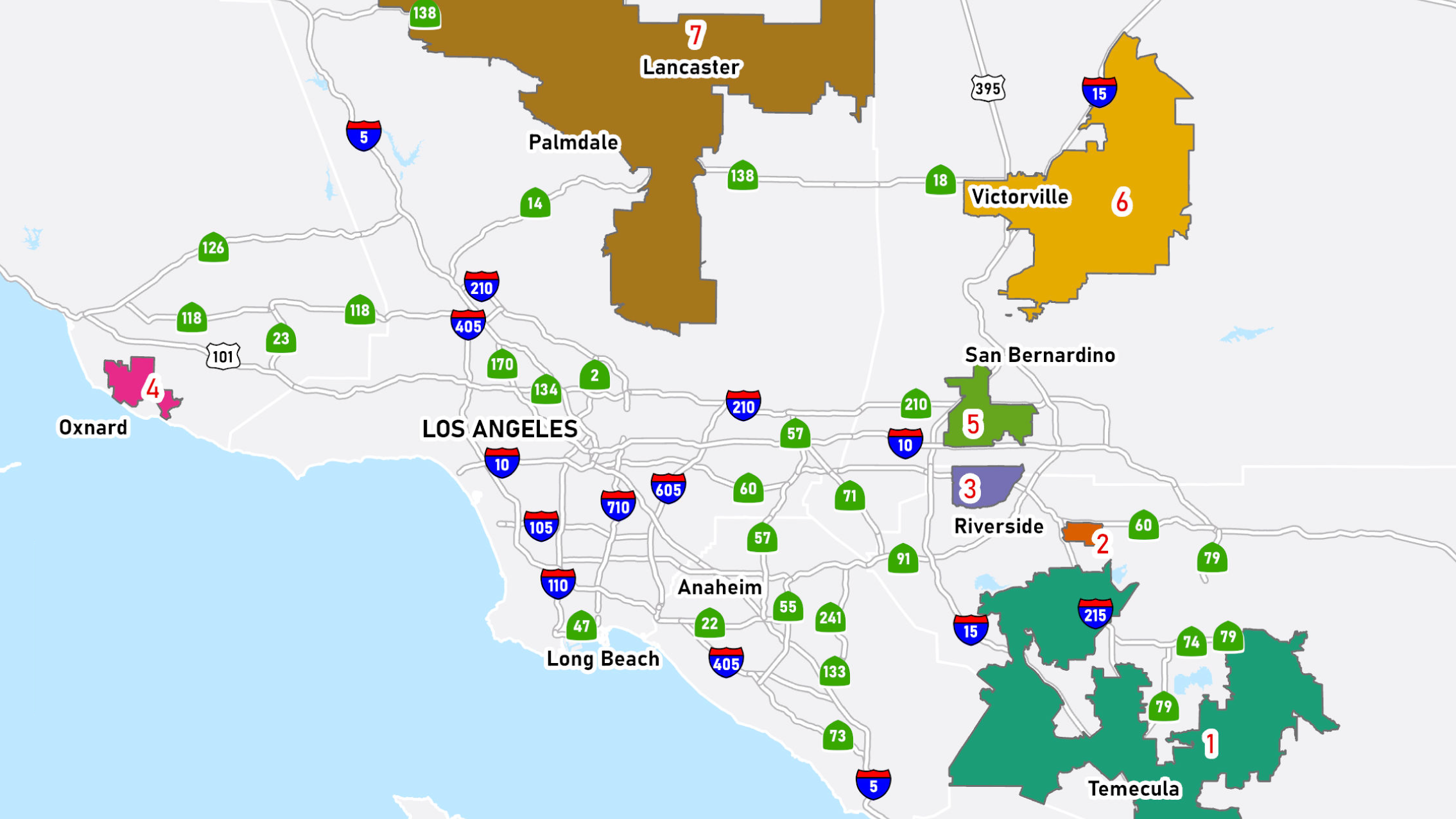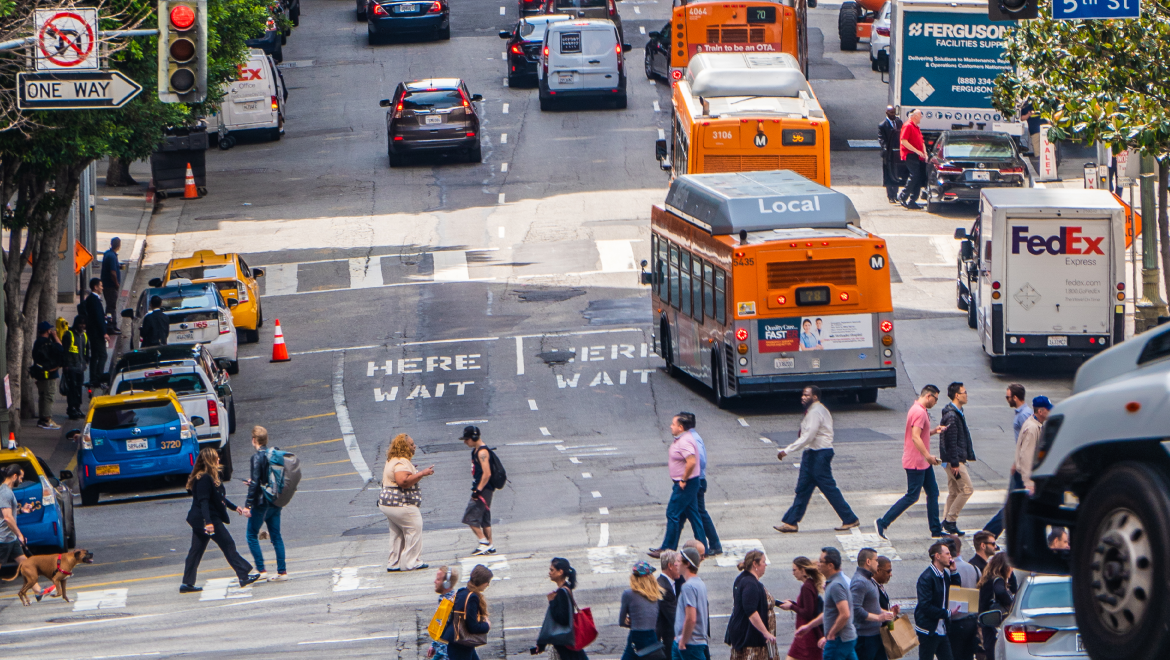
After January wildfires, Luskin students help one vulnerable community build resilience
By JOEY WALDINGER
This spring, as Los Angeles recovered from wildfires that devastated Altadena and Pacific Palisades, a class of UCLA urban planning graduate students was learning how to help vulnerable neighborhoods prepare for the next one.
In assistant professor Minjee Kim’s Site Planning Studio, students spent the quarter immersed in Solano Canyon, repeatedly visiting the hillside community neighboring Dodger Stadium and meeting with residents to develop practical strategies for wildfire resilience.
The class was a crash-course in the realities of urban planning — unexpected challenges, stakeholder relationships and tight deadlines. But these challenges, Kim said, pushed everyone to grow, creating a deeply fulfilling educational experience and laying the foundation for further research on regional wildfire resilience.
“Working with actual stakeholders who had land ownership, resources or authority over the areas we were proposing ideas for — that level of real-worldness wasn’t something I envisioned,” Kim said. “It made the class really challenging but at the same time really rewarding. I’m so grateful to the entire class for being extremely passionate and dedicated about the project, and to the people of Solano Canyon.”
A service to Los Angeles
Kim was still planning her studio curriculum when the fires broke out in January.
“It seemed like a disservice to the community and the broader L.A. region if I didn’t address the wildfires in some way,” she said.
Not wanting to burden recently affected communities, Kim began researching other communities vulnerable to potential fire events. Through the city of L.A.’s Urban Design Studio, she connected with community organizers in Solano Canyon who were already working to reduce wildfire risks.
Sara Harris Ben-Ari, a co-founder of community group 1866 in Historic Solano Canyon, has lived in Solano Canyon since 2000. Fires have sparked in the neighborhood almost monthly for at least a decade, and Harris Ben-Ari and her neighbors have been working to reduce fire risks for nearly as long. But after the Eaton Fire — when burning embers flew into her yard— she pursued solutions with more urgency.
When Kim reached out to discuss a collaboration, Harris Ben-Ari said it felt like a perfect match.
“It was a godsend to have a group of really smart young students who are working at that level and have that level of training, attention … who really want to learn about landscape design and resiliency and geography as it applies to public planning and policy,” she said.
Planning for equitable fire resilience
Nestled within Elysian Park, vibrant Solano Canyon is the last remaining part of Chavez Ravine, a historic neighborhood razed in 1959 to clear space for a massive public housing project known as Elysian Park Heights, which never materialized, and later Dodger Stadium. Solano Canyon is located in one of the state’s highest fire severity zones, though its density and relative affordability are unique among most communities included in fire resilience discourse.
“I thought this would be a great opportunity for the students to work in a diverse and urban environment that is very different from affluent neighborhoods that already have resources to make their communities more fire resilient,” Kim said.
Students took this opportunity head on. During the first Saturday of the quarter, Harris Ben-Ari and fellow 1866 co-founder Lydia Moreno led the class on a neighborhood tour, pointing out fire hazards such as wooden infrastructure, overgrown grasses and invasive eucalyptus trees. Kim urged the students to revisit the area individually throughout the quarter.
Micah Wilcox, a second-year master’s student, said that as the quarter progressed, the class increasingly resembled a project that professional urban planners would encounter in the field. Working in teams, students presented weekly updates on their projects, honed visual and public-speaking skills, and learned to work as a team under tight deadlines.
“To just get dropped into a group and say, ‘Hey, you have a deadline, you guys need to put this together’ — that’s a foundational skill,” Wilcox said. “That’s what we do in the real world.”
Building community ties
Community engagement is another foundation of urban planning that was baked into the class. And in the real world, as Kim’s class learned, community engagement is not always easy.
For the midterm, students invited residents to a presentation analyzing the neighborhood’s wildfire risks and vulnerabilities. Presenting to community members instead of engaging with them sparked tension, while concerns about fires started by the neighborhood’s unhoused population complicated things further.
“We did not realize that [the living quarters of unhoused people] was a major source of fire events in Solano Canyon, and when the community members started bringing up this issue, we didn’t have a good answer,” Kim said.
Kim describes the midterm as a turning point in the class. By the final, the class shifted to a design charette format, where the students created interactive stations that invited participation and input from the residents. She added that students steadfastly advocated for community members to work with their unhoused neighbors in reducing fire ignitions, instead of trying to “sweep away the issue.”
“It wasn’t us presenting information to them. It was more like we are learning from you, and here are some of the ideas and thoughts we can share with you,” Kim said. “So it was very much a cooperative, positive conversation.”
Overall, though, Harris Ben-Ari said the community was impressed by the students’ professionalism and thoughtfulness. The students’ work, she said, stood in stark contrast to what Solano Canyon residents often experience from officials — just holding obligatory meetings without really considering community needs.
“Everybody really felt like they were heard,” she said. “And if they didn’t, they felt like they could explain how they would be better heard and understood.”
What’s next?
Most of Kim’s research focuses on zoning and land use, but her studio class touched off an ongoing project on wildfire resilience. Over the summer, Kim has been working with two graduate students on a report summarizing the class’s recommendations and proposals, and illustrating how Solano Canyon can serve as a model for similarly positioned communities.
“It’s going to be a case study of Solano Canyon, but framed in a way that is helpful for the broader L.A. region in making hillside communities more fire resilient,” she said.
For Harris Ben-Ari and her neighbors, the students’ maps, research and other resources will help them apply for grant funding and push for more support from the city.
“It’s one more very solid tool in the toolbox.”
Featured image: UCLA urban planning students explore Solano Canyon during a field visit for a class studying wildfire resilience and community planning. Credit: Minjee Kim




